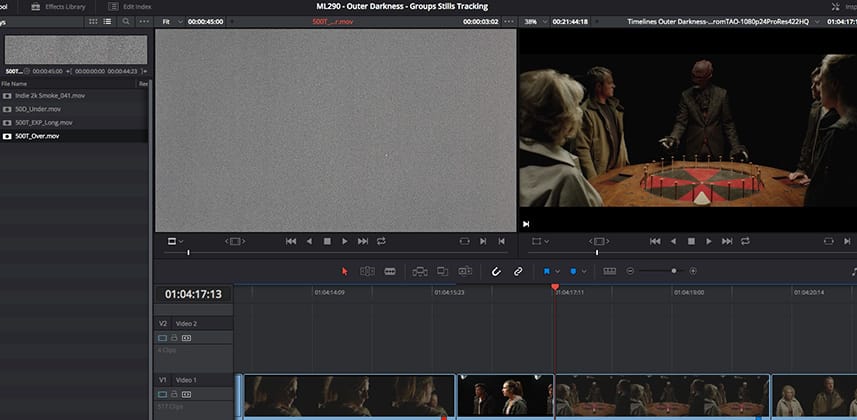| Series |
|---|
Breaking Down ‘The Outer Darkness’: Part 1
Creating a ‘Film Look’ and Managing Film Grain
If we jump into the WABAC Machine, I started a series of Insights on my collaboration workflow for remote clients. Specifically, I broke down that workflow using ‘The Outer Darkness‘ project with the team of BloodyCuts. They’re located in London. I’m located on the east coast of the United States.
At the end of the second Insight, I promised additional Insights into the actual color grading. Now, almost 100 Insights later, let’s follow through on that promise with a 2-part extension of that series.
Let’s start with a breakdown of the Look and how I created a ‘filmic’ feel
We’ll quickly recap my workflow approach when I know I’ll need to create a ‘Look’ for a project. Then you’ll learn one of the essential elements of grading for a ‘film look’ that most people overlook.
You’ll also learn two methods for adding Film Grain
Why did I use two methods in one project? Sometimes, when scenes take place in very different locations and those locations represent very different ‘headspaces’ for the characters – I like to use different tools, even if the end-goal of the final look is the same. It’s often subtle, but it can help the audience’s brain understand that ‘these two things are not the same’.
Enjoy!
-pat
Related Insights
• Workflow Breakdown Part 1: Communicating Visually
• Rendering Filtered Timelines with the Hero Shots Workflow
Member Content
Sorry... the rest of this content is for members only. You'll need to login or Join Now to continue (we hope you do!).
Need more information about our memberships? Click to learn more.
Membership optionsMember Login


